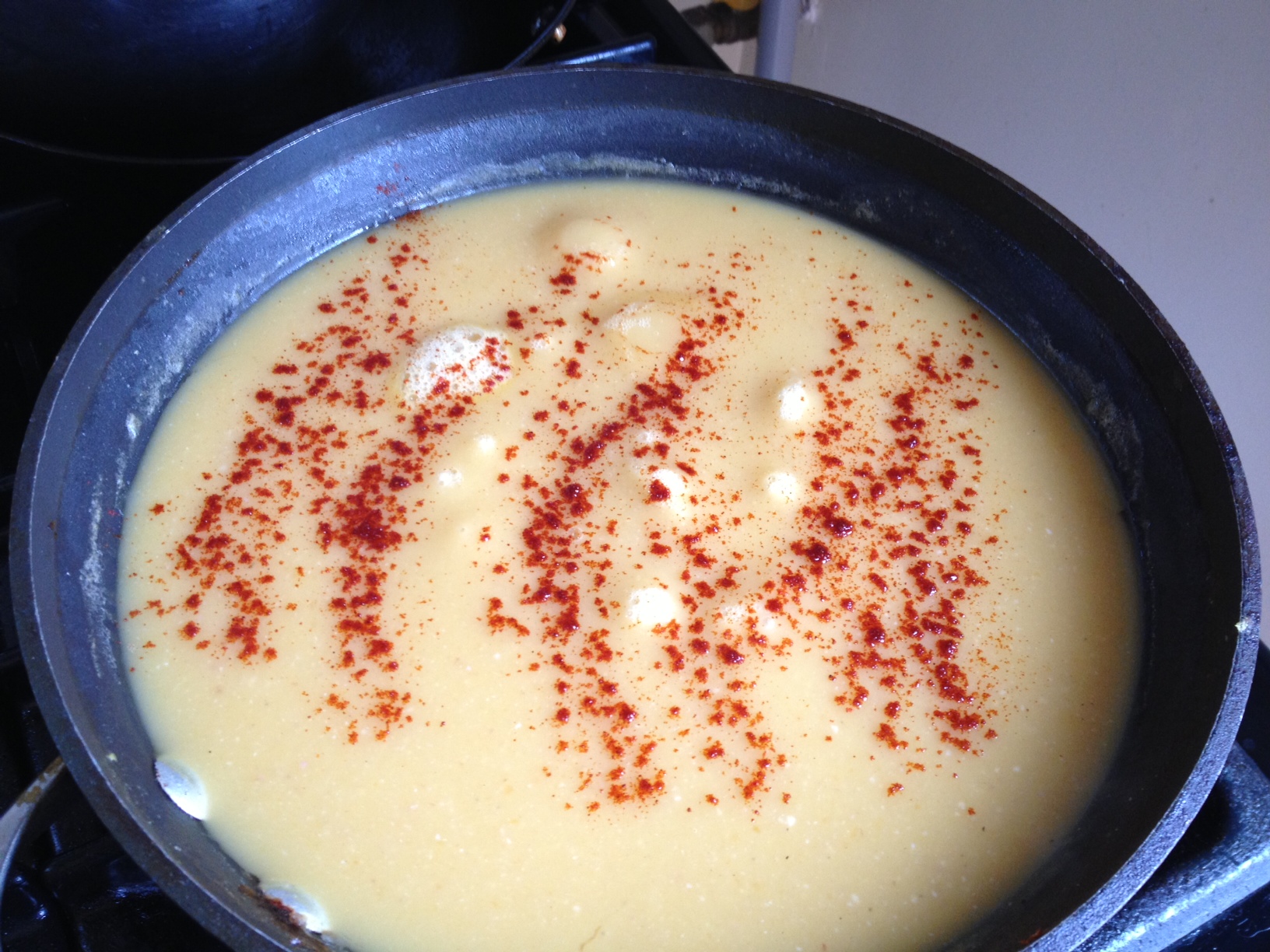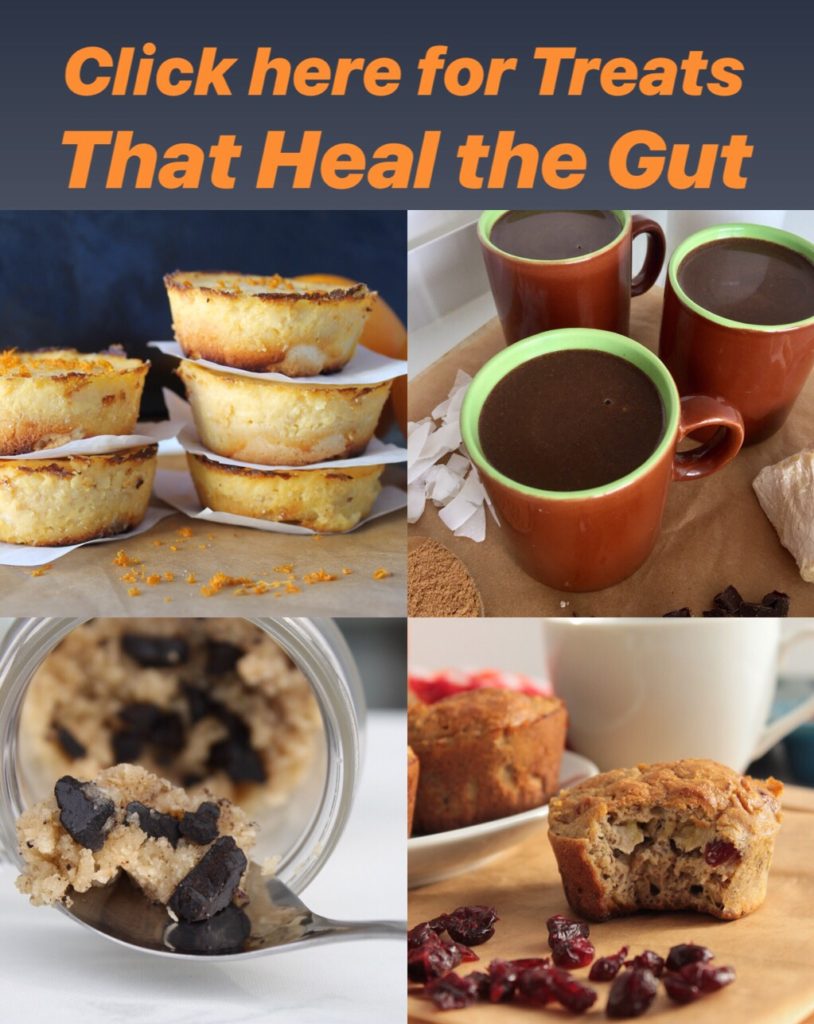We can learn a lot about the natural healing process from animals.
Animals don’t go to doctors (at least wild ones don’t). When they are sick they instinctively fast and rest.
Digestion and movement take up a ton of energy so when you avoid both, the body’s energy and attention turns to self healing.
This said, I don’t suggest fasting as a good form of digestive healing. Many people with long term digestive issues are too depleted to fast.
But we can learn from nature and tailor our diet to support and detoxify us.
My version of the healing IBS elemental diet
This diet takes most of the work out of the digestive process, because it focuses on mostly “predigested” food, yet provides plenty of soothing nutrition and supportive minerals to help the body heal.
Bone broth is the base ingredient of this diet. Check out the blog I wrote about how to make bone broth and how it heals the gut. If you have issues with digesting fats, make sure to put your broth in the fridge and strain off the congealed fat on top.
Since then my bone broth and soup making skills have evolved. And I’ve experimented with low FODMAP ingredients and a kitchen tool (more about this below) that makes the process a pleasure.
The diet basics
Even though meat is a healing food, it’s also very hard to digest. Many people with severely compromised digestion include meat in their diet. But even with digestive enzymes and Betain HCL, the body can still struggle to digest meat. Meat is hard work, and that energy could be better spent on repairing and balancing.
Bone broth provides much of the nutritious benefits of meat (plus more), without the digestive challenge. Meat is something people should work up to eating as digestion heals. Or it should be eaten in a specially prepared way, which I will cover below.
The best food for a compromised digestive system are veggies boiled down in a mix of bone broth and water. Then blended.
Boiling and blending veggies is mineral rich broth begins to break down the food (that’s what I mean by predigested), thus reducing the effort and energy required to digest and assimilate.
The best veggies to start out with are low FODMAP ones. You can experiment with what veggies work best with your body by adding higher FODMAP ones one at a time and noticing the effect.
This hand blender has made soup making a dream, turning it into a simple three step process.
1. You start with chicken or beef bone broth, add filtered water and low FODMAP veggies of choice.
*Note: High FODMAP foods are not a problem for everyone. I was able to eat high FODMAP foods when I was healing. But low FODMAP veggies are the safest, lowest risk veggies to eat if everything seems to bother you.2. Boil down the veggies till soft (keep adding water if it evaporates too fast).
3. Use the hand blender to puree everything. This gives the soup a creamy texture without using dairy and breaks it down even more. If you don’t have a hand blender you can puree your soup in a regular blender.
Soup ideas
These soups have amazing flavor because of the broth. I’ve never been a soup fan but I LOVED these soups because they were bursting with rich flavor. And the gelatin content heals and seals the gut.
Carrot and parsnip soup
4 large carrots, 4 medium parsnips, one small organic red potato, and a green bell pepper. Boil down in meat broth and water and blend with the hand blender. I spiced this with smoked paprika, tumeric, salt and cayenne pepper.
Eggplant soup
I’ve never made or had soup eggplant soup before. But that didn’t stop me. I peeled the skin with an knife and chopped 3 globe eggplants into cubes, roasting them first for 30 minutes in olive oil at 350 (this is totally optional) and threw them in chicken broth with a giant heirloom tomato. Because I’m a spice lover I threw in 4 jalapeno pepper, but that’s not for everyone. I blended it with sea salt and cumin.
Easy peasy pea soup
Start with a bone broth base. Add in a bag of organic frozen peas. (Frozen peas are one of those fuzzy FODMAP foods, some lists say they are ok and some say they are not. Let your body be the judge). Boil, blend and serve.
Starches may be hard for some people to digest. If this is the case then these soups can be made with any low starch veggie combination, like green beans, spinach, or even zucchini!
Go crazy and experiment. It”s how I keep myself from getting bored. And it’s a great way to clear the fridge of produce that are about to go bad.
Add in coconut milk (and if you can tolerate healthy fats like coconut oil or grass fed butter, melt that in). Use fresh herbs (oregano has antibacterial properties). For variety, boil the soup down so it’s less watery. You can even throw in lettuce!
When you’re ready to graduate to meat, use chicken or beef that’s been braised/stewed in broth for many hours in a slow cooker or on the stove on low heat. Oxtail is a great meat for gut health because it’s full of gut-healing gelatin. Or start out with fish.
This cooking process will break down and soften protein in much the same way as it tames fibrous veggies, easing the digestive toll.
How you eat is also important
Your body should be as relaxed as possible before you eat. Sometimes the fear of food reactions can bring about those reactions. Ironic and unfair, I know, but true.
Developing a calming ritual before you eat can make a huge difference. Do something fun before you eat like playing with your children or your dog. Or watching something funny online.
I’m a huge fan of lying down on the ground and putting your feet up for 5 to 10 minutes. This will stimulate the rest and digest response, which will help you assimilate food.
Eating soup is also a more relaxing experience. Because it’s served hot, it slows eating speed. Eating slowly and breathing in between bites soothes the body and releases more digestive juices. And “chewing” your soup will start the digestive process in the mouth as food mixes with salivary enzymes.
And there’s something about soup that makes us feel nurtured.
To save time in this process, pre-roast your veggies a few days before so they soften much faster in the broth. You can also make a huge batch of soup and freeze the leftovers in small serving containers to defrost and heat up the next day.
Tips to make your soup even more digestible
You can make your soup even easier to digest by adding sauerkraut at the last minute before you blend. This will make your soup more tangy and adds the digestive benefits of probiotics.
Or if you tolerate yogurt well you can garnish your soup with a dollop of probiotic-rich yogurt (or try lactose-free yogurt).
If you can’t tolerate sauerkraut, you can add a few teaspoons or one tablespoon of apple cider vinegar or lemon juice to stimulate digestion and support the liver. Adjust the quantities to your taste.
I hope you enjoy my version of the elemental IBS diet and its unlimited options.
This diet will cleanse, repair, balance, support and most importantly, let your body rest and heal.
What a comforting and easy way to kick start the healing process.
 Angela Privin is proof that IBS is NOT an incurable disease or a disease at all. IBS is a body out of balance. It’s an invitation for change. After solving her own IBS mystery more than a decade ago Angela trained as a health coach to help others.
Angela Privin is proof that IBS is NOT an incurable disease or a disease at all. IBS is a body out of balance. It’s an invitation for change. After solving her own IBS mystery more than a decade ago Angela trained as a health coach to help others.
Angela uses both science and intuition to help people figure out what’s out of balance in their body. She works with lab tests, dietary changes, supplementation and nervous system rebalancing. Get help rebalancing your digestive system and solving your IBS mystery here.








Recent Comments